Abstract
In studies carried on in bacteriological media with selected cultures, definite repressive effects were noted on the growth of the Staphylococcus population by a mixture of saprophytic, psychrophilic bacterial species. This repressive effect became more pronounced as the relative proportion of the bacterial population which was staphylococcal became smaller. A varied saprophytic bacterial flora of some numbers apparently would offer definite protection to foods through repression of staphylococcal growth and by rendering the food inedible before the rise of appreciable numbers of staphylococci. It would appear that at the optimal temperature for staphylococcal growth, staphylococci could multiply rapidly in the mixed population due to the comparative shortness of the generation time of this species and because of the lengthened lag phase of the saprophytic bacterial species at this elevated temperature, especially when only cultures having psychrophilic characteristics were present. This temperature is substantially above that encountered in practical experience. With the passage of time, the staphylococcal population was completely overgrown by the saprohytes present. This effect might be eliminated in the presence of psychrophilic and mesophilic, saprophytic species. The repressive effect of competition by saprophytic, psychrophilic organisms is extremely effective up to room temperature on the staphylococcal population. Even when significant staphylococcal populations were achieved in the artificial media, such tremendous numbers of saprophytes were obtained either earlier or at the same time so that a frozen food containing this population would be organoleptically unacceptable due to the degradative action of enzymes from the saprophytic psychrophile population.
Full text
PDF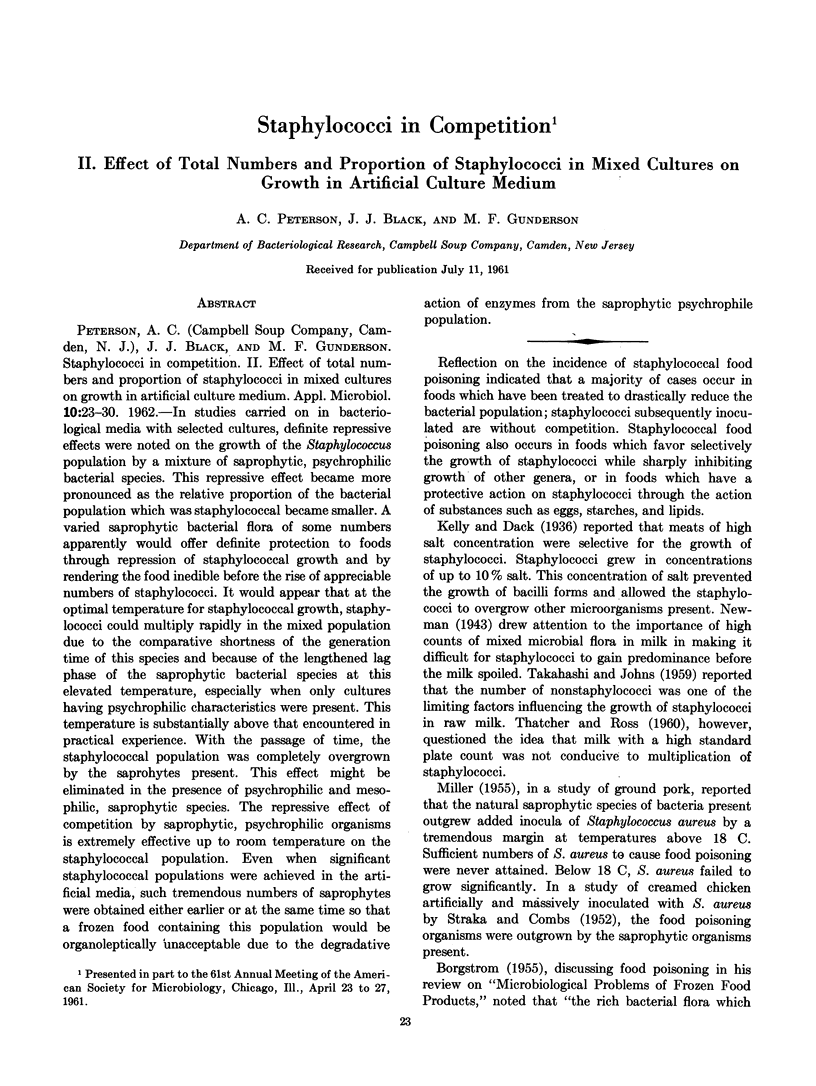
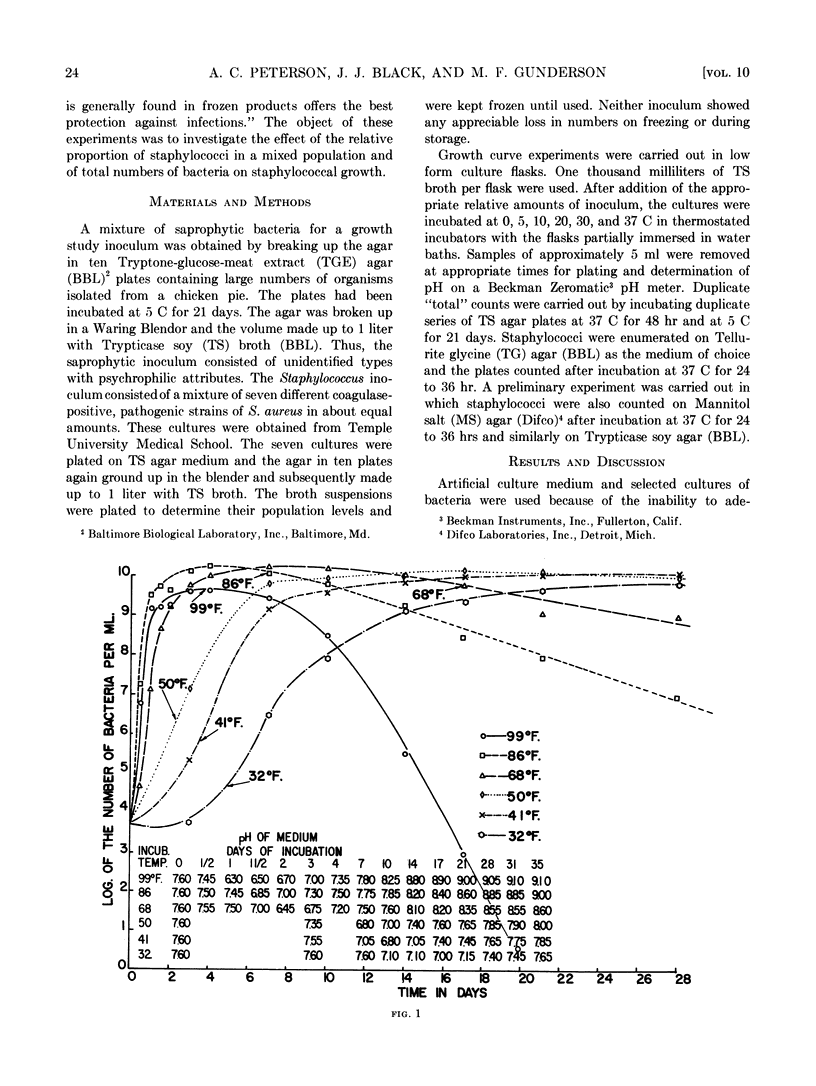
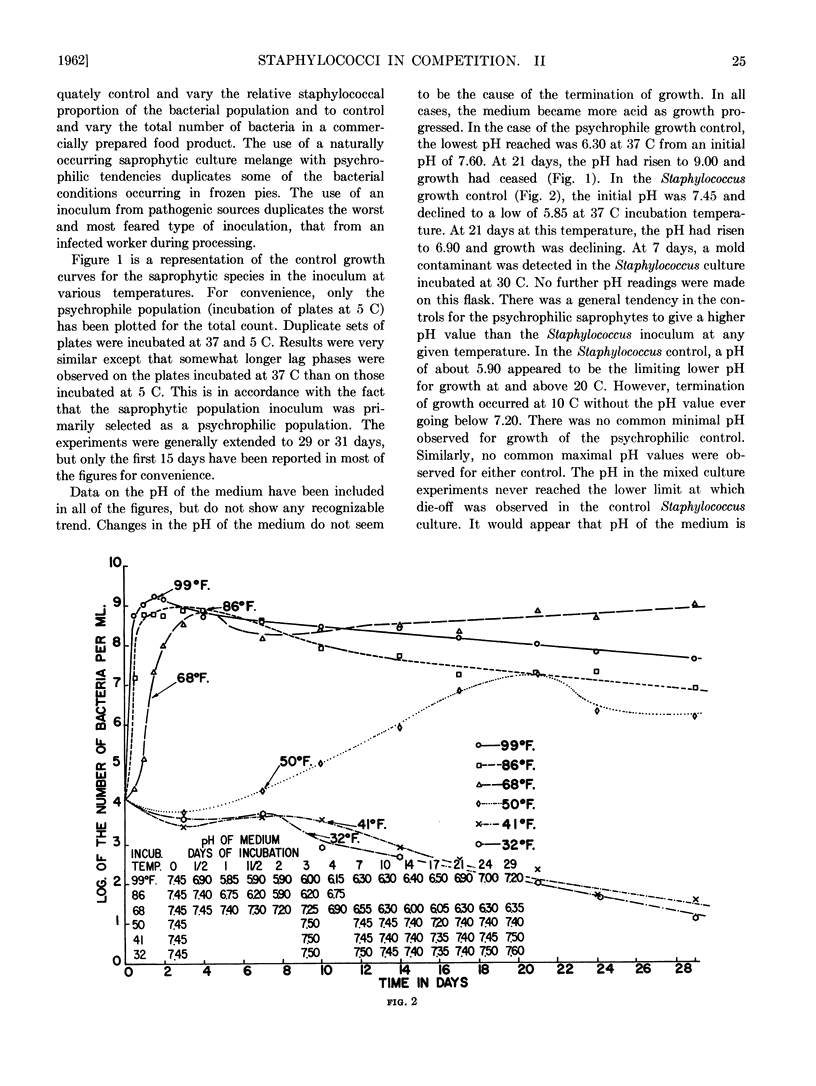
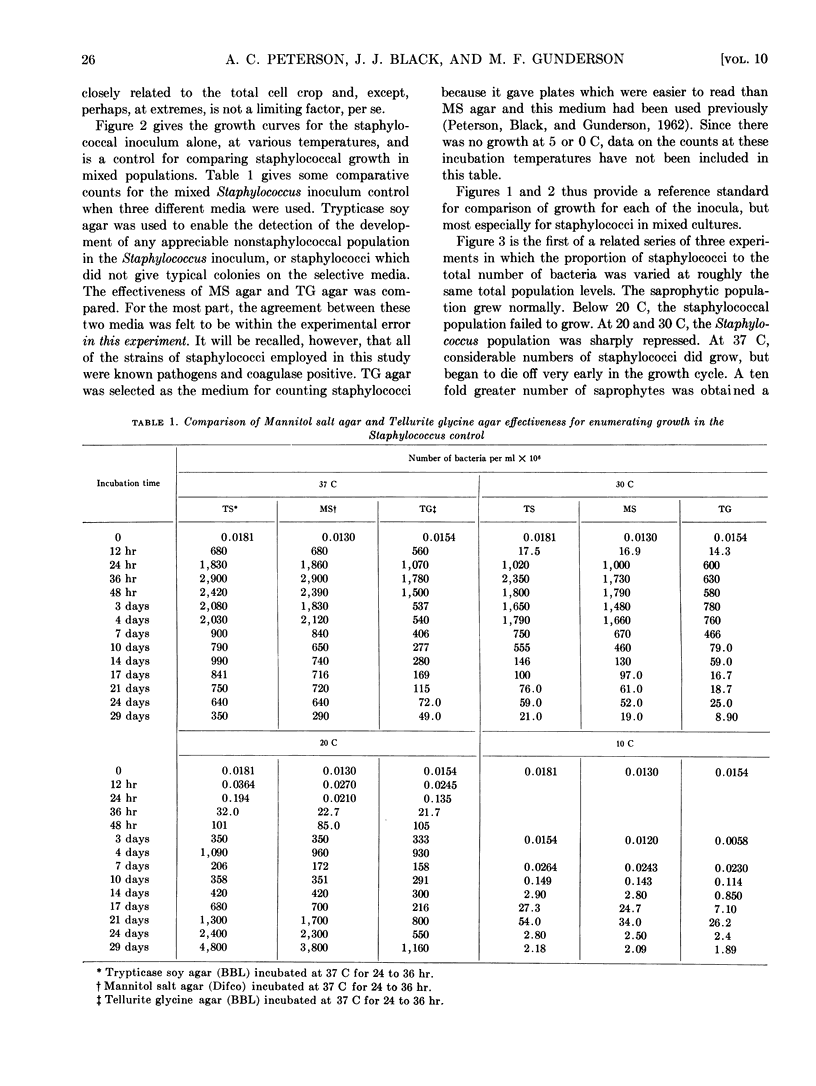
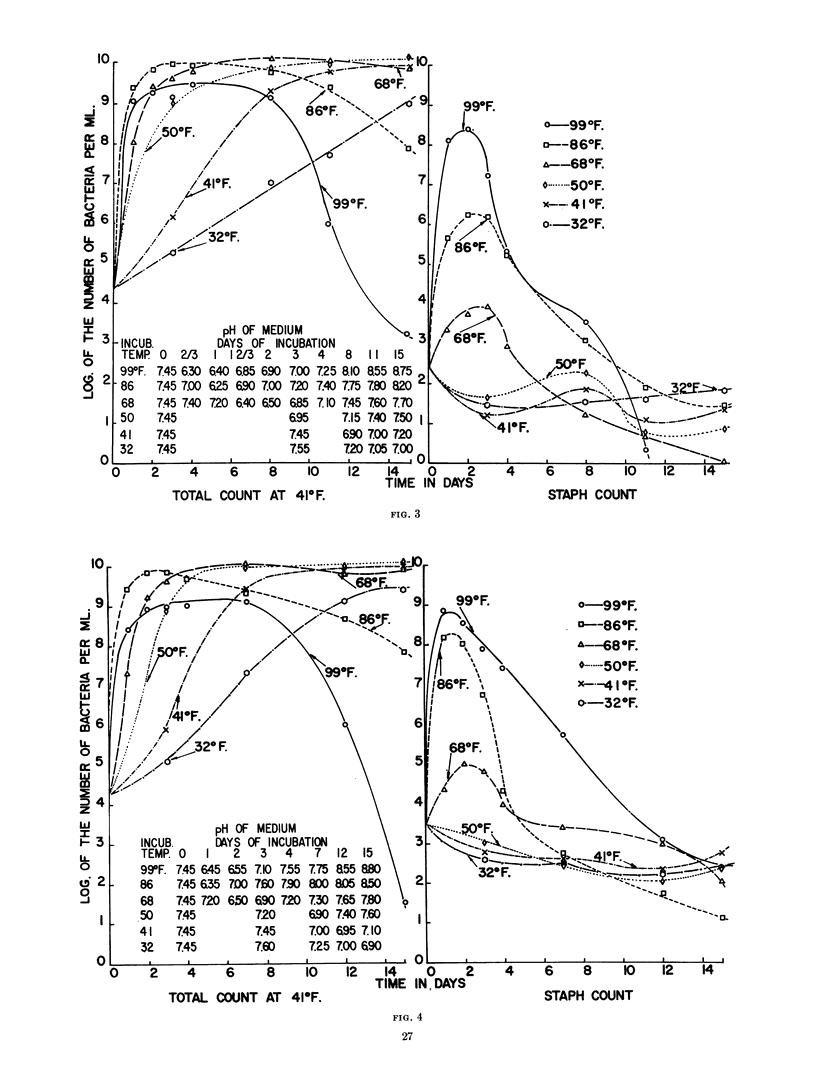
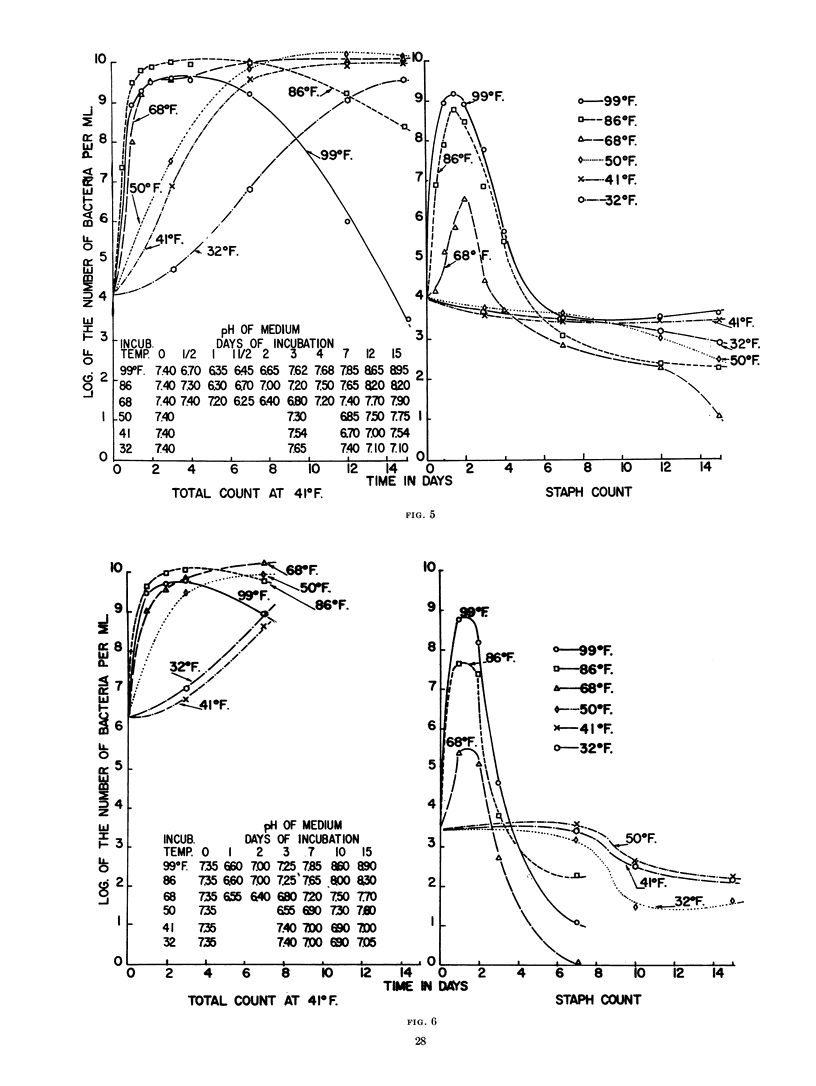
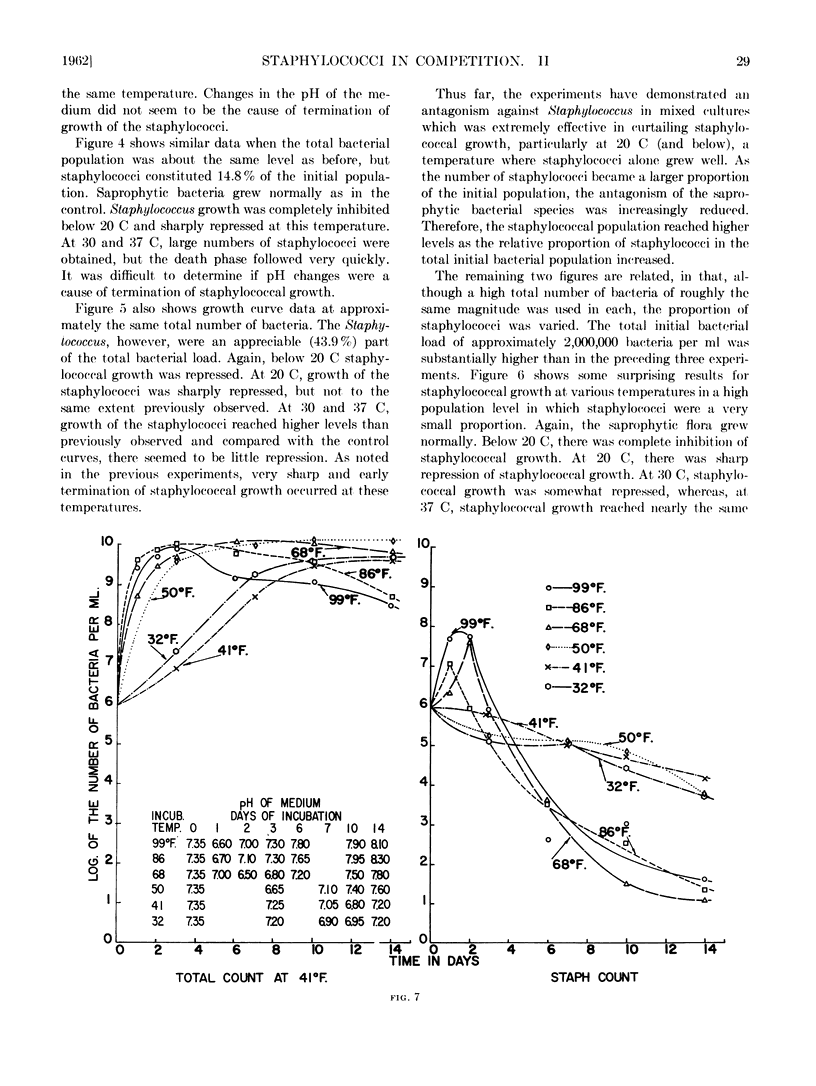

Selected References
These references are in PubMed. This may not be the complete list of references from this article.
- Kelly F. C., Dack G. M. Experimental Staphylococcus Food Poisoning: A Study of the Growth of a Food Poisoning Staphylococcus and the Production of an Enterotoxic Substance in Bread and Meat. Am J Public Health Nations Health. 1936 Nov;26(11):1077–1082. doi: 10.2105/ajph.26.11.1077. [DOI] [PMC free article] [PubMed] [Google Scholar]
- PETERSON A. C., BLACK J. J., GUNDERSON M. F. Staphylococci in competition. I. Growth of naturally occurring mixed populations in precooked frozen foods during defrost. Appl Microbiol. 1962 Jan;10:16–22. doi: 10.1128/am.10.1.16-22.1962. [DOI] [PMC free article] [PubMed] [Google Scholar]
- THATCHER F. S., ROSS D. Multiplication of staphylococci during cheese making: the influence of milk storage temperatures and of antibiotics. Can J Public Health. 1960 Jun;51:226–234. [PubMed] [Google Scholar]


